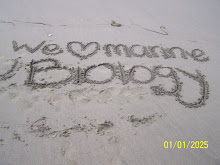
Irukandji jellyfish
Description:
The Irukandji jellyfish are marine organisms that are very tiny however, they should not be underestimated! This is one of the deadliest creatures of the world, they are an exremely venomous species of jellyfish. If one were to be stung by one of these vicious jellies, you would begin having symptoms of Irukandji syndrome. These jelly fish are no larger than a centimeter cubed! There are two known jellyfish species that are realated to the Irukandji, they are called- Carukia Barnesi and another that was recently found in Japan named Malo Kingi.
Biology:

Irukandji are extremely petite, they have a bell structure that measures to be approximately 1 cm wide, and has 4 venomous tenticles that can be anywhere from a few centimeters to 35 centimeters long! Their stingers also known as nematocysts have a clumpy shape, they have rings of tiny red dots around the bell of the jellyfish and the stingers. Due to the fragile state and difficulty of containment, there is not alot of information about the life cycle of this poisonus creature...It is believed by reasearchers that its toxins are so strong that it immidiatley stuns it's victim-Usually, the Irukandji preys on small fish but it still can have a deadly impact on humans if they come into contact with this creature. Scientists assume that the Irukandji syndrome may be attainable from other types of jellyfish, Carukia Barnesi and Malo Kingi have been proven to cause it.
Irukandji Syndrome:
 Irukandji syndrome can be caused by the smallest ammount of venom... symptoms of the syndrom includes severe pains in the body- usually excruciating muscular cramps in appenadges, or in kidneys, burning feeling in face and skin, headaches, nausea, restlessness, sweating, vomiting, high heart rate, and blood pressure. The sting of an Irukandji is not extremely painfull, just irritating; symptoms of the syndrome can appear anywhere in a time spand of 5 to 120 minutes. Symptoms are capable of lasting from several days or just a few hours- but hospitalization is commonly needed. To alleviate the pain, vinigar, antihistamenes, and anti-hypertensive drugs (morphine) can help to neutralize pain, however it has no effect on the venom that is already in the body.
Irukandji syndrome can be caused by the smallest ammount of venom... symptoms of the syndrom includes severe pains in the body- usually excruciating muscular cramps in appenadges, or in kidneys, burning feeling in face and skin, headaches, nausea, restlessness, sweating, vomiting, high heart rate, and blood pressure. The sting of an Irukandji is not extremely painfull, just irritating; symptoms of the syndrome can appear anywhere in a time spand of 5 to 120 minutes. Symptoms are capable of lasting from several days or just a few hours- but hospitalization is commonly needed. To alleviate the pain, vinigar, antihistamenes, and anti-hypertensive drugs (morphine) can help to neutralize pain, however it has no effect on the venom that is already in the body.Location:

Irukandji jelly fish can be found near costal areas, they tend to reside in warmer waters but they have also been found pretty far from the shore. With correct treatment an Irukandji sting is normally not fatal, but 2 people have been known to have died in Austraila from a sting from this little critter in 2002. They are currently trying to spread awareness about Irukandji Syndrome to beach bums. Snorkelers are at a high risk!


































